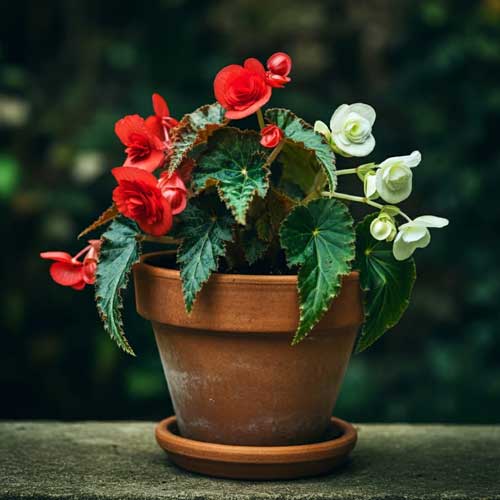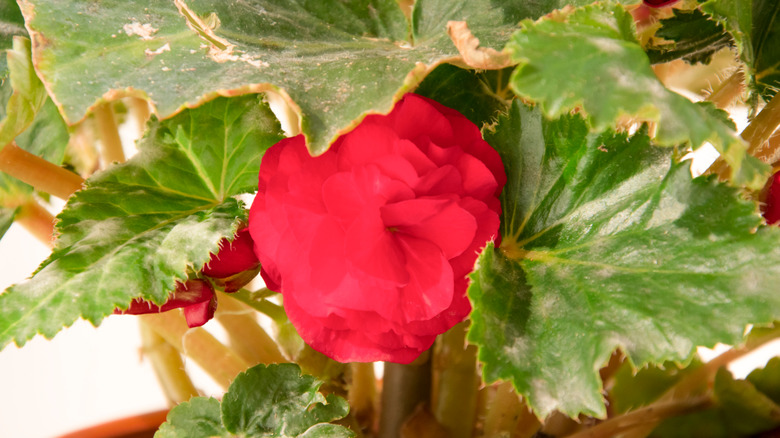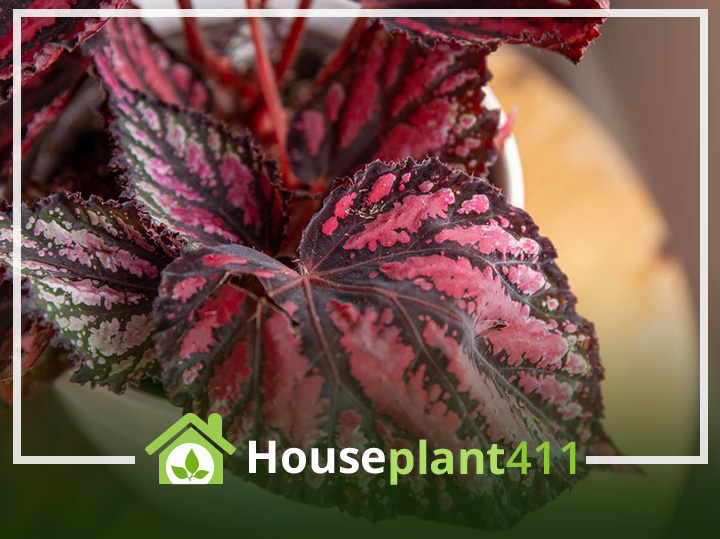The Bewitching Begonia: A Comprehensive Guide to Cultivation, Care, and Captivating Varieties

Begonias, with their diverse foliage, vibrant blooms, and adaptable nature, have captivated gardeners for centuries. From the delicate, cascading varieties perfect for hanging baskets to the bold, architectural statement plants, the genus Begonia offers something for every taste and skill level. This comprehensive guide delves into the fascinating world of begonias, exploring their history, classification, cultivation techniques, and popular varieties, empowering you to cultivate these bewitching beauties with confidence.
A Glimpse into Begonia History and Classification:
The Begonia genus, belonging to the Begoniaceae family, boasts over 1,800 species, making it one of the largest genera of flowering plants. Its name honors Michel Bégon, a French administrator and plant enthusiast, who was recognized by Charles Plumier, a French botanist, during an expedition to the West Indies in the late 17th century. While the first begonias were discovered in the Americas, they have since been found across tropical and subtropical regions worldwide.
Understanding the classification of begonias is crucial for providing appropriate care. While various classification systems exist, they are broadly categorized based on their root structure:
- Fibrous-rooted Begonias: These begonias possess a network of fine, fibrous roots. They are generally easy to grow and are often popular choices for beginners. Examples include wax begonias (Begonia semperflorens-cultorum) and angel wing begonias (Begonia coccinea).
- Rhizomatous Begonias: These begonias have a thick, creeping stem, or rhizome, that grows horizontally along or just beneath the soil surface. They are prized for their striking foliage patterns and textures. Rex begonias (Begonia rex-cultorum) are a prime example.
- Tuberous Begonias: These begonias grow from a tuber, a swollen underground stem that stores food. They are known for their large, showy flowers and are often grown in hanging baskets or containers. Examples include Begonia x tuberhybrida.
Within these broad categories, further distinctions are made based on growth habit, leaf characteristics, and flowering patterns, leading to an incredible diversity within the Begonia genus.

Cultivating Begonias: A Step-by-Step Guide
Successful begonia cultivation hinges on understanding their specific needs. While requirements vary depending on the type, some general principles apply:
1. Choosing the Right Begonia:
- Consider your environment: Assess your available light, temperature, and humidity levels. Fibrous-rooted and rhizomatous begonias generally tolerate lower light conditions than tuberous begonias, which require bright, indirect light for optimal flowering.
- Match your skill level: Some begonias are more demanding than others. Wax begonias are relatively low-maintenance, while Rex begonias can be more challenging.
- Select for desired traits: Choose begonias based on your preferred foliage color, flower size, and growth habit.

2. Providing the Ideal Growing Medium:
- Well-draining soil: Begonias require a light, well-draining soil mix to prevent root rot. A mixture of peat moss, perlite, and vermiculite is often recommended.
- Slightly acidic pH: Aim for a soil pH between 6.0 and 6.5.
- Avoid heavy clay soils: These soils retain too much moisture and can suffocate the roots.

3. Watering Techniques:
- Water thoroughly, then allow the soil to dry slightly: Begonias prefer consistently moist but not soggy soil.
- Avoid overhead watering: Wet foliage can lead to fungal diseases. Water at the base of the plant.
- Reduce watering during dormancy: Tuberous begonias enter a dormant period in the fall and winter, requiring minimal watering.
4. Light and Temperature Requirements:
- Bright, indirect light: Most begonias thrive in bright, indirect light. Avoid direct sunlight, which can scorch the leaves.
- Warm temperatures: Begonias prefer temperatures between 65°F and 75°F (18°C to 24°C).
- Protect from frost: Begonias are sensitive to frost and should be brought indoors during cold weather.
5. Humidity Considerations:
- Moderate to high humidity: Begonias generally prefer moderate to high humidity levels.
- Increase humidity: You can increase humidity by placing the plant on a pebble tray filled with water, using a humidifier, or grouping plants together.
6. Fertilizing Practices:
- Balanced fertilizer: Feed begonias with a balanced fertilizer (e.g., 20-20-20) diluted to half strength every 2-4 weeks during the growing season.
- Avoid over-fertilizing: Excessive fertilization can lead to leggy growth and salt buildup in the soil.
- Reduce or stop fertilizing during dormancy: Tuberous begonias do not require fertilization during their dormant period.
7. Pruning and Deadheading:
- Prune regularly: Pruning encourages bushier growth and removes dead or damaged foliage.
- Deadhead spent flowers: Removing spent flowers promotes continued blooming.
8. Pest and Disease Management:
- Common pests: Begonias can be susceptible to pests such as mealybugs, aphids, and spider mites.
- Inspect regularly: Check your plants regularly for signs of infestation.
- Treat infestations promptly: Use insecticidal soap or neem oil to control pests.
- Fungal diseases: Begonias are prone to fungal diseases such as powdery mildew and botrytis.
- Ensure good air circulation: Proper air circulation helps prevent fungal diseases.
- Avoid overwatering: Overwatering can create conditions favorable for fungal growth.
- Fungicides: Use fungicides as a last resort to treat fungal diseases.
Popular Begonia Varieties to Explore:
The sheer variety of begonias can be overwhelming, but here are a few popular choices to get you started:
- Wax Begonias (Begonia semperflorens-cultorum): These are among the easiest begonias to grow, boasting continuous blooms in shades of red, pink, and white. They are popular choices for bedding plants and containers.
- Rex Begonias (Begonia rex-cultorum): Prized for their spectacular foliage, Rex begonias offer a kaleidoscope of colors, patterns, and textures. They are best suited for indoor cultivation.
- Angel Wing Begonias (Begonia coccinea): These begonias are characterized by their wing-shaped leaves and clusters of delicate flowers. They thrive in hanging baskets and containers.
- Tuberous Begonias (Begonia x tuberhybrida): Known for their large, showy flowers, tuberous begonias are a classic choice for hanging baskets and containers. They require a period of dormancy during the winter.
- Cane Begonias: These begonias feature upright, cane-like stems and are prized for their architectural form. They often have spotted or patterned leaves.
- Trailing Begonias: Perfect for hanging baskets, these begonias offer a cascading display of foliage and flowers.
Begonia Propagation:
Begonias can be propagated through various methods, including:
- Stem cuttings: This is a common method for propagating fibrous-rooted and cane begonias.
- Leaf cuttings: Rex begonias can be propagated from leaf cuttings.
- Rhizome division: Rhizomatous begonias can be propagated by dividing the rhizome.
- Seed: Begonias can also be propagated from seed, although this method can be more challenging.
FAQ about Begonias:
- Q: Why are my begonia leaves turning yellow?
- A: Yellowing leaves can be caused by overwatering, underwatering, nutrient deficiencies, or pests. Check the soil moisture, fertilize if necessary, and inspect for pests.
- Q: My begonia isn’t flowering. What could be the problem?
- A: Insufficient light, improper fertilization, or lack of deadheading can all prevent flowering. Ensure your begonia is receiving adequate light, fertilize regularly with a balanced fertilizer, and remove spent flowers.
- Q: How do I overwinter tuberous begonias?
- A: After the first frost, dig up the tubers and allow them to dry for a few days. Store them in a cool, dry, dark place until spring.
- Q: Are begonias poisonous to pets?
- A: Begonias are considered mildly toxic to pets. Keep them out of reach of cats and dogs.
- Q: How do I get rid of mealybugs on my begonia?
- A: Wipe mealybugs off with a cotton swab dipped in rubbing alcohol. You can also spray with insecticidal soap or neem oil.
Conclusion: Embracing the Begonia’s Allure
Begonias, with their incredible diversity and captivating beauty, offer a rewarding gardening experience for both novice and experienced plant enthusiasts. By understanding their specific needs and providing appropriate care, you can cultivate these bewitching beauties and enjoy their vibrant foliage and blooms for years to come. So, embrace the allure of the begonia and discover the endless possibilities that this remarkable genus has to offer. From the humble wax begonia to the majestic Rex, there’s a begonia waiting to bring a touch of magic to your home or garden.
